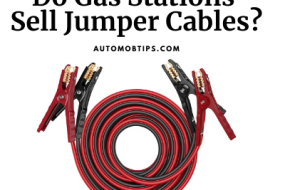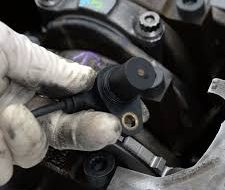
A car is supposed to move smoothly anytime it’s in motion. No one wants to drive a car that jerks and surges with bad suspension.
However, the ball joint is what helps to form a connection between the control arms and steering knuckles to provide smooth movement within the suspension. They allow the steering knuckles to move in different directions while ensuring they remain attached to the vehicle.
But overtime, the ball joints can get bad and needs to be replaced. After the replacement, what possible issues could you face? What are the common problems after changing ball joints?
Problems After Changing Ball Joints
Here are the list of problems you may face after changing ball joints:
1. Steering Becomes an Issue
You may start experiencing steering issues after replacing ball joints and the reasons for this not farfetched.
If during the course of the replacement you forgot to give the ball joints the correct torque they need to function, steering might become unpredictable and the best solution to this is to torque the ball joint the correct way.
However, if after giving the ball join the correct torque it needs and the problem persist, then there’s something wrong with the ball joint. It could be that the ball joints you purchased are not original. In this case, you need to replace it with original ball joints.
2. Tire Wear
You may face the problem of tire wear after a ball joint replacement. You may start seeing your tire going terribly bad on daily basis.
When you start noticing tire wear after ball joint replacement, just go and check your alignment. It’s possible your alignment is not in good order hence why it’s damaging your tire. A simple alignment should fix this issue.
3. Steering Not Always Responding
Your steering may become unresponsive after a ball joint replacement, especially if your car starts wandering all over the place.
This problem can easily be fixed with an alignment. So doing an alignment will solve the problem as you may have messed with the alignment during the replacement procedure.
4. Misaligned
As reiterated earlier, you can mess with the alignment of your car during a ball join replacement. So the best thing to do is to have your car checked for alignment issue before driving the car.
If during the replacement, the alignment was tempered, you will need to do another alignment for the car.
5. Clunking or Squeaking Noise
You might start hearing a squeaking or clucking noise after doing a ball joint replacement. When this happens, know very well that you may have failed in lubricating the ball joints very well.
The solution to this problem is to lose the ball joints where the noise is coming from and have lubricated.
6. Steering Becomes Hard and Stiff
You might also experience a hard and stiff steering after a ball joint replacement in the sense that you may turn your steering to one side and it becomes very difficult to turn it back to the other side.
This problem can be caused by a bad ball joint orientation. However, if you’re sure that you did the ball join installation right, a simple alignment should fix this issue.
7. Frequent Vibrations and Shakiness
You may start experiencing vibrations and shakiness after a ball joint replacement. Not lubricating the ball joints properly can cause this issue. So the solution is to always make sure the ball joints are properly lubricated when doing the replacement.
Solutions to These Problems
The solution to the problems you may encounter after replacing ball joints are:
- Ensure to install the ball joints the right way
- Ensure to give the ball joints the right torque
- Ensure the ball joints are properly lubricated
- Ensure to check your alignment after doing a ball joint replacement. It’s a must thing
- Ensure to purchase the right ball joint for your car made quality materials.
When you install a good and quality ball joints in the right way and perform an alignment afterwards, your car should drive well with no abnormal noise, no wear and tear and most especially no stiff steering.
Can Ball Joints be Installed Wrong?
Yes, ball joints can be installed wrong especially if someone with no knowledge on how to do a ball joints replacement do the work for you.
It it’s interesting to note that ball joints are designed specially, therefore, if the installer failed to align the ball joints in the control arm during the installation, it could lead to problems such as loss of vehicle control. So yes, a ball joint can be installed wrongly.
What Else Should I Replace When Replacing Ball Joints?
While replacing your ball joints, it is wise to check the car’s control arm. If the control arm seems old and under performing, it is better to change it along with the ball joints.
How Many Times Can You Replace Ball Joints?
Replacing your ball joints once can do the job for you except you made the replacements with a fake part that doesn’t last.
Ball Joints replacement is not something you do often, neither is it something to do when you feel like. The current ball joints in your car needs to get bad first before the replacement.
There’s no need replacing a part that still works fine except maybe when there’s visible sign that the part will soon go bad.
Should I Replace Both Upper and Lower Ball Joints?
Yes, according to several auto technicians, it is wise to change both the upper and lower ball joints at the same time.
What Would be the Result if the Ball Joint was Installed at an Incorrect Angle?
If the ball joints were installed in an incorrect angle, it will cause the new or just installed ball joint to fail prematurely. They won’t last the way they should. Therefore getting the correct angle when installing the ball joint is a must thing to do.
Final Thoughts
The most common problems to face after changing ball joints are alignment issues. Performing a simple alignment would fix every other problems you may face after replacing your ball joints.
Therefore, anytime you had your ball joints replaced, ensure to have your alignment checked. If after verifying that the replacement affected the alignment of your car, ensure to perform another alignment for the car.









